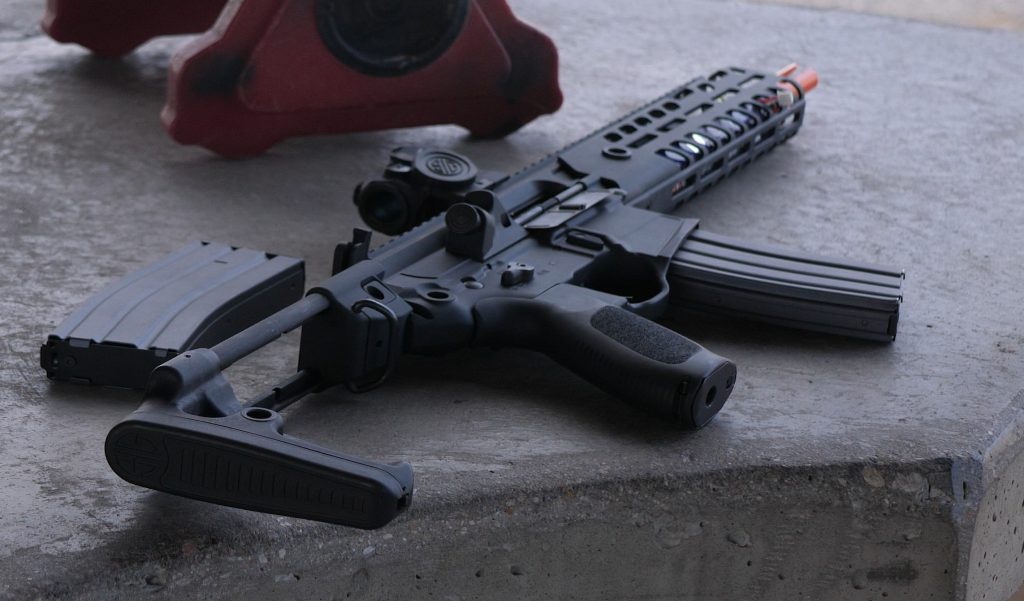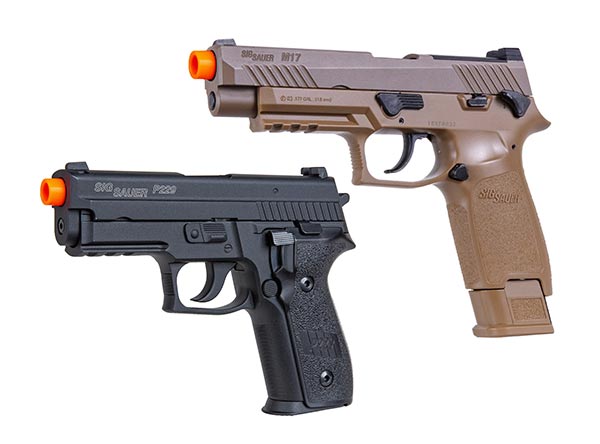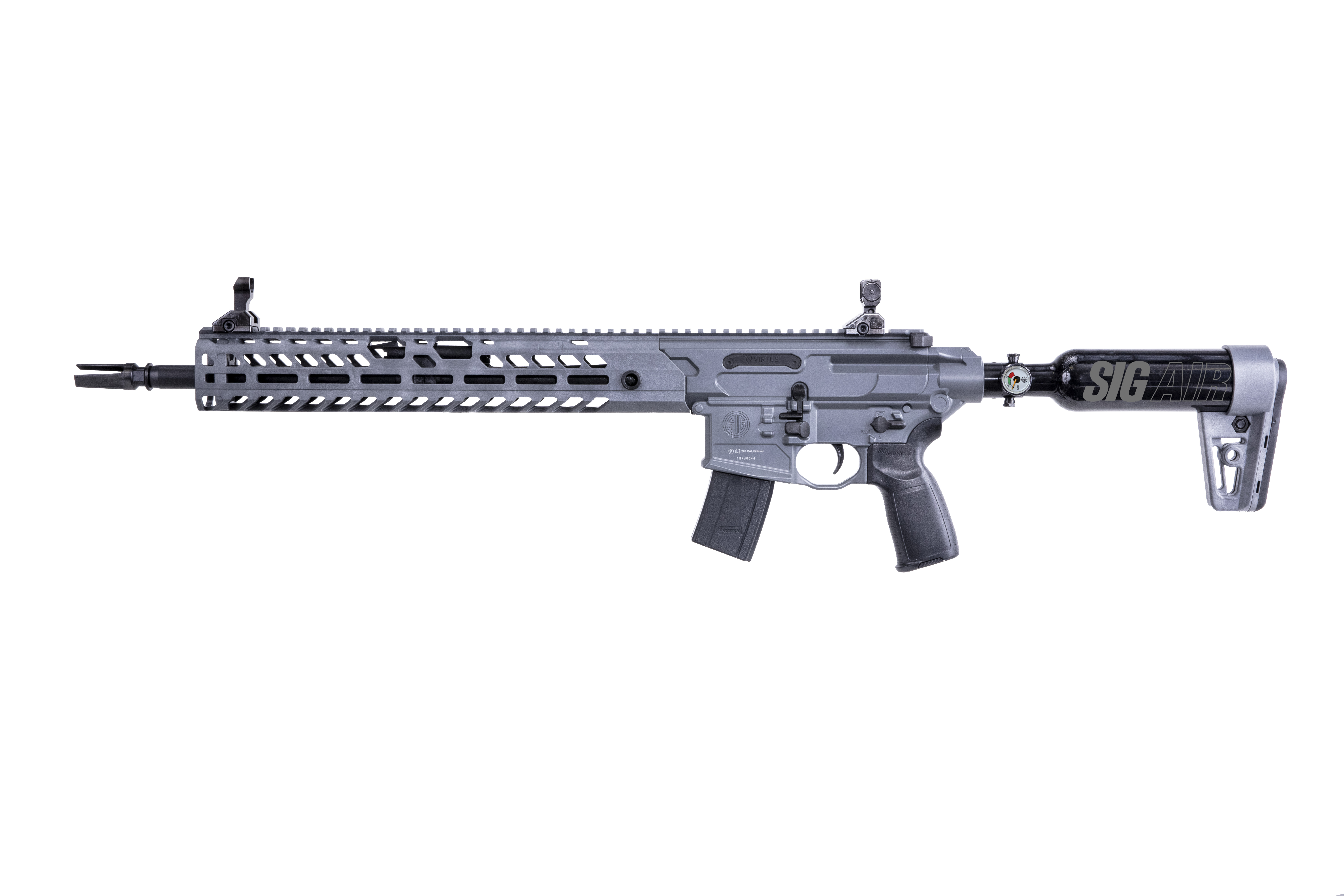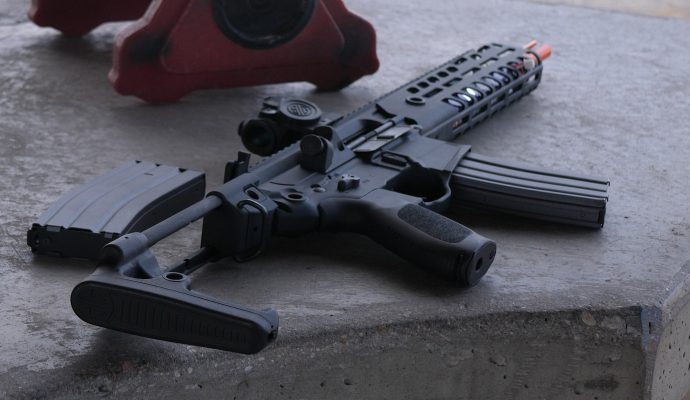
At SHOT Show 2019, the Wires team caught up with SIG AIR Product Manager Dani Navickas to get some of her perspectives on the world of airgunning and SIG’s new venture into the airsoft market. Unless you’ve been in a 24-hour news cycle induced coma, you might have noticed that the folks at SIG SAUER are making some big moves in the airgun, and now airsoft, markets. Here’s what’s going on.
Airgun Wire: SIG SAUER just announced its new ProForce line of airsoft guns. Why did you decide to get into the airsoft market?
Dani Navickas: Well, we feel airsoft is just another great platform for training which is why we introduced the new ProForce line. SIG AIR started with CO2 Advanced Sport Pellet and BB guns. What you get with our ProForce airsoft is the safer force-on-force training – that’s what the plastic projectiles are for. You can actually shoot them at each other in a gaming situation or a military simulation. It’s sort of like paintball but with more realistic guns. So, force-on-force training is a big advantage of airsoft, and we have achieved much more realism with our ProForce airsoft guns as far as function, feel, weight and features like full-drop magazines, a locking slide, field stripping capability and more. That’s why agencies and organizations like the U.S. Coast Guard train with SIG AIR ProForce airsoft guns.

AGW: Just to be clear, as with paint ball, users have to use eye protection?
Dani: Absolutely. Eye protection, face masks, proper, ear protection – everything. So, there are numerous clothing and safety regulations to be able to go on a paint ball or airsoft field.
AGW: Why is airsoft better for training than airguns?
Dani: Airguns and airsoft are both great for training, they are just different. With airsoft you’re shooting a six-millimeter plastic projectile as opposed to, say a BB gun, which fires a 4.5-millimeter steel projectile. That’s why you’re able to shoot them at each other without much harm if you’re using the proper safety equipment, so this force-on-force training is what sets airsoft apart.

With airsoft, the velocity is lower – usually in the 300 feet per second range. Also, the weight of the projectile is a big factor. Airsoft projectiles usually weigh just .12 grams and maybe up to .25 grams, but generally don’t exceed that. That’s why airsoft projectiles don’t penetrate the skin. On fields of play, there are regulations that limit the power level and projectile weight.
AGW: So, how many different airsoft guns is SIG AIR making now?
Dani: Right now, we have one ProForce airsoft rifle, the MCX Virtus AEG. The AEG stands for automatic electric gun. So, it runs off of a rechargeable lithium-ion battery. We also have a few different ProForce airsoft pistol models, the M17, P226, and P229.
AGW: Can we assume that the airsoft models are just like the same model center-fire guns?
Dani: What we have done with the ProForce airsoft line is to match weight, feel, dimensions, and positioning of the all the features of the actual firearm so they are as close to identical as possible given the different projectiles and operating system. With the airgun and airsoft guns, you’re not training with a toy but rather a close replica.
AGW: What’s the price point for the new ProForce airsoft products?
Dani: For the handguns, we’re looking at the $150 to $170 range. For the long guns, we expect prices in the $399 to $459 range. These should be available in the late second quarter of this year.

